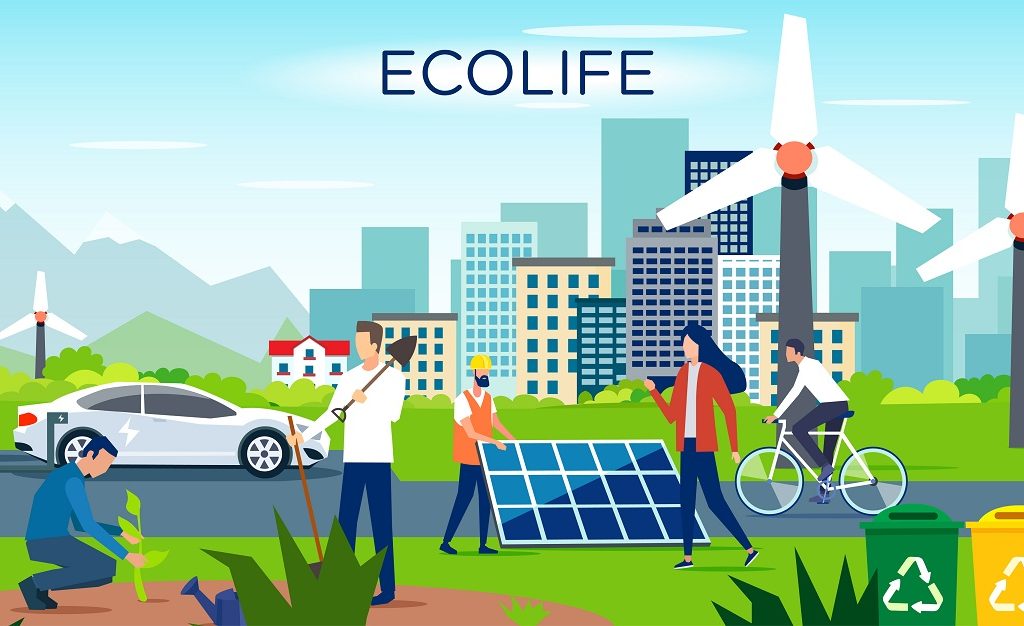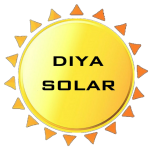Learn More About Solar Energy

(The photovoltaic effect is what makes solar possible. Read more about how it works on Wikipedia.)
To generate solar energy for your home or office, you need a solar power system.
What is solar Energy?
The sun doesn’t just provide warmth and light – it’s also a source of energy.
Solar energy (or solar power) is the energy we generate from sunlight. Through a process known as the photovoltaic effect, we can convert energy from the sun’s rays into electricity that can power our TVs, refrigerators, lights and other appliances.
What are the parts of a solar energy system?
There are other key components to a solar system aside from the panels themselves.
To generate your own energy, you need a complete solar power system. The essential components:
- Solar panels, to capture energy from the sun
- An inverter, to convert that energy to a format that can power your appliances
- Racking, the foundation on which you mount your system
You also need a method to store the energy generated by the panels. If you have access to power lines, this doesn’t require additional equipment. It can simply be fed into the utility grid and used later.
But if you are off the grid, you’ll need additional parts:
- Batteries, to store the energy you generate
- Charge controller, to control the rate at which batteries charge from solar
These are connected by smaller components like wiring, fuses, and disconnects.
You can also add equipment to monitor your system’s output online, which helps troubleshoot any issues with shading or defective equipment.
What are the pros and cons of solar Energy?
Here are some reasons why you might choose solar over another source of power:
- Renewable: Sunlight is an infinite resource. It’s not like oil, which we remove from the Earth and spend when we use it. The sun’s rays can be harvested for energy over and over again without depleting the source.
- Lower Electric Bills: As a replacement for grid-tied properties (anywhere with access to power lines), solar power costs just a fraction of what you pay the utility company each month. A properly sized system can drop your electric bill to $0.
- Remote power: If you live in a remote location, it may be too expensive or impossible to run power lines to your house. Solar power systems generate energy when you can’t hook into the power grid.
- Improve Property Value: Homes equipped with solar systems sell for 3.74% more than equivalent homes without solar. Solar homes sell for $14,329 more on average. Read more about how solar impacts property values. Off-grid solar also enables you to buy affordable undeveloped property in rural areas.
Here are some drawbacks to consider before going solar:
- High up-front cost: Even small systems cost a few thousand dollars, and full-scale systems for a family home can reach a 5-figure price tag. Though it pays for itself in the long run, it can be prohibitively expensive to get started.
- Weather Dependent: Shade, snow and other obstacles reduce the output of your solar panels. If your panels don’t get a lot of sun, they won’t work as efficiently as advertised. You can buy equipment designed to mitigate this, but it costs more.
- Takes up space: Solar panels are over 3 feet wide and 6-7 feet tall depending on configuration. An average residential system might contain a few dozen panels. They take up a lot of space on your property, so you need to make sure you have somewhere to put them.
- Storage is expensive: Batteries are by far the most expensive part of a solar system. If you need them to store power (either off the grid or as backup for your grid-tied system), that will eat into your return on investment. They should be used out of necessity, or to provide peace of mind in areas with unreliable power.
What’s the difference between grid-tie vs. off-grid solar?
The first thing to decide when you go solar is whether you need a grid-tied or off-grid system.
Each has a distinct benefit:
Grid-tie systems save money on your electric bill. It’s less expensive than buying electricity from the utility company. We recommend this to everyone by default if they can connect to the utility grid. Always build a grid-tied system if you have access to power lines!
Off-grid solar is for delivering power to remote properties without easy access to power lines. They cost more (due to the addition of batteries), and the main value is delivering power to a remote location.
There’s a third system type as well, which is a hybrid of the first two: it connects to the grid, but also includes batteries. Solar companies refer to these as either battery backup or energy storage systems. There are two main benefits:
- Store backup power in case of outages (useful if you live in an area with an unreliable power grid or severe weather)
- Store energy so you can use it or sell it later (useful if you live in an area with time of use rates, high demand charges, or no net metering)
Energy storage systems provide extra peace of mind and get the most from the electricity you generate. It’s up to you to decide if it’s worth it to spend more on your system for the added flexibility.
What is net metering?
Grid-tie solar systems store the power they generate in the public utility grid. In return, the utility company credits your account for the power you generate. Those credits can be claimed to draw power from the grid when the sun isn’t out (at night or during poor weather).
Every utility company has their own policy which outlines the rates at which solar customers are credited and billed for power. This agreement is known as a net metering policy.
In many cases, the utility will buy and sell electricity at the same rate. But some utilities may buy power from solar customers at reduced rates, which has a real impact on the ROI of going solar. So it’s important to contact your utility and understand the terms of their net metering policy.
Read our net metering guide to learn more about how it works.
What are solar panels made of and how do they work?
Solar cells are made primarily from silicon, a chemical element with conductive properties. Exposure to light changes silicon’s electrical characteristics, which generates an electric current.
A cell is a small square of silicon (about 6” x 6”) with electrical contact plates on the face. Solar panels are made by laying out a grid of these cells on a protective backsheet and covering them with glass on the front.
It takes multiple panels to provide power to a typical home or office. A collection of panels in your system is called an array. Panels wired into the same inverter are known collectively as a string of panels. (Inverters have a maximum string size, an upper limit to the number of panels they can support.)
For example, you may have a system with two inverters supporting two strings of 10 panels each, which comes together to make a 20-panel array.
How long do solar panels last?
Most manufacturers guarantee under warranty that their panels will be at least 80% efficient for 25 years.
When the warranty is up, the panels don’t break down. They simply keep working at a reduced output. A panel that is rated at 300 watts, for example, would still produce 240 watts of output at the 25-year mark.
Panels tend to be extremely reliable. A study by NREL (National Renewable Energy Laboratory) showed that over 75% of panels outperformed their warranty.
However, other parts like inverters and batteries have a shorter lifespan. You should expect to replace these parts at least once over the life of ownership, and those replacements should factor into total costs over the life of the system.
Inverters are warrantied for 10-20 years. Expect to replace your inverter once or twice in your system’s lifespan.
If you include batteries with your system, those will also need to be replaced. Lead-acid batteries typically last 3-7 years depending on how well you maintain them. Lithium batteries are warrantied for 10-15 years.
Learn more in our article: “How Long Do Solar Panels Last?”
How big are solar panels?
Panels come in two standard configurations: 60-cell or 72-cell. If you want to know when you might choose one over the other for your solar project, read our breakdown of 60 vs 72 cell solar panels.
60-cell panels measure 39” by 65”, while 72-cell panels are 39” by 77”. In reality, these dimensions can fluctuate by up to an inch because manufacturers use different frame sizes. But the 60 and 72 cell layouts are standardized across the industry.
There are also smaller options for RV / mobile use, and some companies (like Panasonic) are experimenting with larger 96-cell panels, but these sizes aren’t common enough to be standardized at the moment.
What are the types of solar panels on the market?
There are two established cell technologies that dominate the market: monocrystalline and polycrystalline solar cells (mono and poly, for short).
Mono cells are cut from a single source of silicon, while poly cells are made by blending multiple bits of silicon into a single cell.
Since the composition of poly cells is less “pure,” they tend to be slightly less efficient on average. However, this isn’t a hard and fast rule, since other factors affect solar cell efficiency as well.
In addition to mono and poly panels, there are several emerging technologies to keep an eye out for, like thin film and bifacial panels. Read our breakdown of solar cell technology to learn more.
How is solar panel efficiency measured?
The concept of solar panel efficiency is often misunderstood. Most panels have an efficiency rating in the range of 15-25%, which sounds really low without context.
Some people hear this and think, “wow, I only get 20% of the production from my panel? That sounds like a waste.” The assumption is a 100-watt panel would only produce 20 watts of power. But that’s not what we mean when we talk about efficiency.
In reality, the efficiency rating measures how much of the sun’s potential energy is converted to solar power. Using the same example, a 100-watt panel with a 20% efficiency rating will absorb 20% of the potential 500 watts of continuous power coming from the sun.
Don’t sweat too much about panel efficiency. The only real benefit to more efficient panels is that they fit more solar in less space.
High-efficiency panels matter if you’re trying to build in a tight space, but there’s nothing wrong with building a larger array with less efficient panels. The latter option typically reduces the overall cost of the system (because less efficient panels have a lower cost-per-watt, all other things being equal).
What does an inverter do?
A solar inverter converts DC (direct current) into AC (alternating current).
Solar panels generate DC power, but most household appliances run on AC power. The inverter simply takes the energy you generate and turns it into a format that can power your electrical loads.
There are a few different types of solar inverters, each with their pros and cons.
Solar is ready. Are you?

If you haven’t gone solar with Diya Solar, get a free quote today to get in touch with one of our expert Solar Advisors. We’re here to help you every step of the way.
